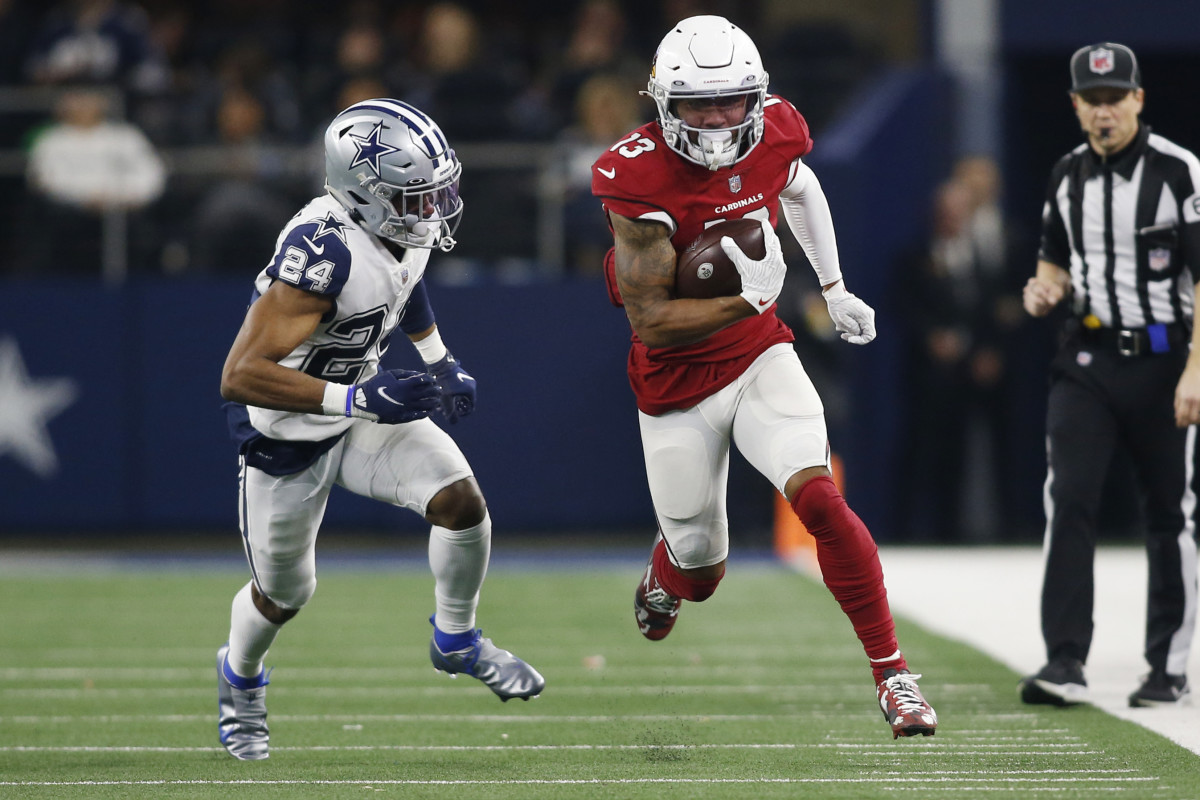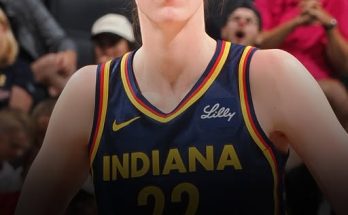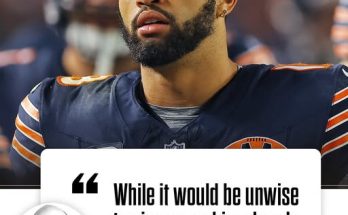The Arizona Cardinals are entering a critical phase in their franchise’s rebuilding process. After a season that saw the team finish with a 4-13 record, it’s clear that changes are necessary in order to stay competitive in the hyper-competitive NFC West. With key players either aging or underperforming, the team needs to address both its immediate needs and future potential.
While they have solid pieces in place, including young quarterback Kyler Murray and promising defensive players, the Cardinals must add talent to their receiving corps. DeAndre Hopkins, once one of the league’s top wideouts, may not be in the team’s long-term plans, and the receiving room, outside of Hopkins, lacks a true number-one option.
In light of this, a bold trade proposal that would bring a former 1,000-yard receiver to Arizona could change the trajectory of the franchise’s offense in the coming years. This blockbuster move would involve a trade with a team looking to rebuild, a team that is willing to part with a highly talented but underutilized player in exchange for draft capital. The receiver in question is none other than former Indianapolis Colts standout, Michael Pittman Jr.
The Trade Proposal
Cardinals Receive:
- Michael Pittman Jr. (WR)
- 2025 4th Round Pick
Indianapolis Colts Receive:
- 2025 1st Round Pick (Arizona’s own)
- 2025 3rd Round Pick
This deal would be a game-changer for both teams. The Colts, in the midst of a rebuilding process after moving on from quarterback Matt Ryan, are looking to accumulate high draft capital to further build their roster. Meanwhile, the Cardinals are in a position to make a move that could change the complexion of their offense for the next several seasons.
Why This Trade Makes Sense for the Cardinals
- A Legitimate Number-One Receiver: The Arizona Cardinals have been in desperate need of a legitimate number-one receiver for the better part of the last few seasons. DeAndre Hopkins has been their focal point for years, but with his future in doubt (whether through potential trade or age-related decline), Arizona needs a younger, dynamic playmaker who can step in and immediately contribute.
Enter Michael Pittman Jr., who has shown the ability to be a true number-one receiver. In 2022, Pittman tallied 99 catches for 925 yards and 4 touchdowns, narrowly missing the 1,000-yard mark despite inconsistent quarterback play in Indianapolis. In 2021, he achieved over 1,000 yards, finishing with 1,082 yards and six touchdowns. His size (6’4”) and physicality, paired with his ability to make plays after the catch, make him a perfect fit in an offense that needs to maximize Kyler Murray’s strengths.
With Murray’s mobility and deep-ball accuracy, Pittman would be an ideal weapon for the Cardinals, providing them with a consistent target who can also stretch the field. Having a receiver with the ability to win in contested situations would also take some pressure off the other skill players on the team, such as Rondale Moore and Hollywood Brown, who would complement Pittman in a dynamic receiving corps.
- Youthful Energy and Potential: At just 26 years old, Pittman is entering his prime, and his trajectory as a top receiver is still very much on the upswing. Despite a less-than-ideal quarterback situation in Indianapolis, he has proven his ability to produce at a high level. The chance to bring him to Arizona would allow the team to solidify its future at the position while giving Murray a reliable, long-term option in the passing game.
- A Bridge for the Rebuild: While the Cardinals are rebuilding, they are not in full-on tank mode. With Kyler Murray still under contract for several more years, the team can afford to make moves that will help them remain competitive in the short term while also preparing for the future. This trade strikes a balance between both worlds — giving up valuable draft capital for a player who can contribute immediately but is still young enough to be a key piece for the long haul.
A trade like this would also signal to the locker room and the fanbase that the Cardinals are committed to winning now, and they are willing to make bold moves to make that happen. This type of aggressive move is exactly what the Cardinals need to do in order to get out of the rut they find themselves in.
- Strengthening the Offensive Line and Playcalling: In the past few years, the Cardinals’ offense has often been hampered by inconsistency from the offensive line and issues with playcalling. The addition of a bona fide wide receiver like Pittman would provide head coach Jonathan Gannon with more versatility in his playbook, opening up more opportunities for play-action and deeper passing concepts. This would force opposing defenses to respect the passing game, thus allowing Murray more time in the pocket.
This move could also allow the front office to focus on strengthening the offensive line and finding a long-term solution at running back. The additional draft picks from the trade would provide the Cardinals with more flexibility to address those areas, further complementing their passing attack.
Why This Trade Makes Sense for the Colts
- Rebuilding with Draft Capital: The Indianapolis Colts are in a transition phase, particularly after parting ways with Matt Ryan and transitioning to a younger quarterback in 2023. With a new head coach and a roster that still needs significant upgrades, acquiring more draft capital should be a priority for Indianapolis. The Colts already have a promising young quarterback in Anthony Richardson, and the 2025 draft class is expected to be rich with talent, especially on the defensive side of the ball.
By trading Michael Pittman Jr., the Colts could move up in the draft to secure top-tier talent to help build their future. The trade would bring Indianapolis a 1st Round Pick (Arizona’s own) and a 3rd Round Pick, allowing them to continue to reshape their roster in the image of their new coaching staff.
- Sparing a Wide Receiver: The Colts have some solid pieces in place at wide receiver, including rising star Alec Pierce, and they have shown a commitment to rebuilding their roster around their young quarterback. Moving on from Pittman may seem like a difficult decision, but it could be the right one in the context of the Colts’ long-term goals. While Pittman is undoubtedly a talented receiver, it may be time to shift their focus toward the future and find a receiver who better fits the evolving style of play that the Colts are aiming for.
- Adding Depth to Other Areas: The Colts, like many rebuilding teams, need help in multiple areas. A move like this would allow them to bolster other positions, including defense, offensive line, and possibly a running back. They’ve already invested in Richardson and their offensive line, but with Pittman gone, they’ll have a chance to explore the receiver market or rely on emerging talent like Alec Pierce to carry the load moving forward.
Potential Roadblocks and Considerations
While the trade scenario makes sense for both sides, there are a few key considerations that could affect its likelihood:
- Salary Cap Implications: Michael Pittman Jr. is currently playing under his rookie contract, which is a huge benefit for the Colts. However, the Cardinals would need to ensure they have the cap space to take on his current contract and still maintain flexibility in future years. The team has room to maneuver under the cap, but this trade would need to be carefully managed to avoid long-term cap issues.
- The Status of DeAndre Hopkins: DeAndre Hopkins’ future in Arizona is a significant factor in this trade proposal. If Hopkins remains with the team, he would still be the top receiver, and the team might hesitate to trade multiple picks for a receiver like Pittman. However, if Hopkins is traded or released in the near future, it makes this trade more logical as it would fill the void left by the All-Pro.
- Risk of Overpaying: Trading a 1st and 3rd Round Pick for a receiver is a significant investment. While Michael Pittman has shown flashes of greatness, there is always the potential for a trade to backfire if he doesn’t live up to expectations or if the Cardinals end up missing out on a potential game-changer in the draft. The front office would need to carefully evaluate the potential return on investment for this move.



